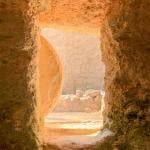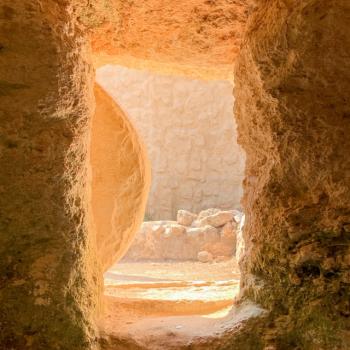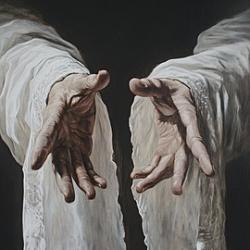
In the period between 381 and 384 AD, a woman named Egeria made a remarkable journey from Spain to the Holy Land in order to participate in the services of Easter. Even more remarkably, she wrote and published her diary, which stands today as the earliest and most complete description the early church’s liturgical celebration of Holy Week. Her pilgrimage provided the foundation for the services that we celebrate today. Unchanged in their significance from the earliest times, these services help us walk with our Lord as he journeys through his last week of life, his death and his resurrection.
Egeria writes:
After the Eucharist, at which the story of our Lord’s entry into Jerusalem had been read, the people hurried home to eat. At one o’clock, they met the bishop near the top of the Mount of Olives… at five o’clock they processed down the Mount with branches of palm or olive trees, singing psalms including Psalm 118 with all shouting “Blessed is he who comes in the name of the Lord.” The procession went to the site of our Lord’s tomb, a prayer was held at the site of the cross, and the people were dismissed.[1]
Despite the great antiquity of this service the question that regularly troubles me is this: Does the average Christian understand its significance today?
I ask because this service is hardly innocuous. The readings are, instead, meant to confront us with both the significance of these events in the life of Jesus and – harder yet – deep questions about our ability and willingness to respond to that challenge.
If you think of this story as one in which we are invited to participate in the events that transpired in Jerusalem, it becomes immediately clear that we play the role of the crowd — both the crowd that greets Jesus with palms and hosannas — and the crowd that then calls for his execution. In telling and in retelling this ancient story the church understood its power lay not just in describing the sacrifice that Jesus made but in underlining our own capacity for hypocrisy and cowardice.
Often without knowing it we all evade the painful truths of this liturgy. Some of us evade those truths by supposing that the events belong firmly in the past. Others of us evade its truth by assuming that we would have been a part of the crowd that greeted Jesus on that day but we would have never participated in his betrayal.
Both assumptions, of course, are wildly incongruent with what we know about ourselves and about human nature. Contrary to the assumption that the events on that day in Jerusalem are one-of-a-kind, we can all think of instances where we first pivoted one direction and then another in response to the events around us. We don’t need to be following Jesus through the streets of Jerusalem to betray him.
I can think, for example, of events in academic institutions where faculty expressed great bravery behind closed doors and then caved in public when threatened with the loss of their jobs or the good opinion of their colleagues. I know clergy who pretend publicly to be people of great faith when threatened with the loss of their employment who behind closed doors believe little or nothing of what they preach.
And I am sure that you can think of similar circumstances in your own life. Corporations where leaders profess to be people of faith but who – on any given Monday – misrepresent the products they sell or gouge their customers. Caregivers who cut corners. Employees who look the other way, when surrounded by misconduct. Family members who do and say things that are less than loving.
The more painful moments of betrayal, of course arise out of situations where we know that we could have been more courageous, more faithful, and more consistent. So, when Jesus prays, “Father forgive them for they know not what they are doing,” we are invited to confront the truth that we are as much in need of that prayer as anyone who was present on that day so long ago.
It would be a mistake, though, to assume that the purpose of the liturgy is to engender a sense of guilt or to instill a sense of hopelessness. The power of the Palm Sunday liturgy lies in its ability to take us into the heart of darkness, where we can be honest about our frailty but at the same time look to Jesus for the confidence that we are not condemned to live in that space. There is no doubt that there have been Christians who have failed to realize this. They see the story of Palm Sunday as only a perennial reminder of our capacity for cowardice and hypocrisy.
But the words of forgiveness from Jesus on the cross are flanked in the gospel by his invitation to follow him and the lives of those who did in the wake of his death and resurrection. No other ancient story is as painfully honest about our capacity for failure and – at the same time — is as certain of the power of God’s grace.
So, I encourage you to take the liturgy home with you. Read and reread it, followed by periods of silent meditation. Ask God to speak to you about the ways in which your own life’s journey has paralleled the events of the Palm Sunday liturgy.
If you need courage, pray to receive it and live out of it. If you need the strength to be consistent in the way that you live, pray for that consistency. If you are holding Jesus at arm’s length, ask Him to speak to you.
Whatever you need to do, receive His forgiveness and live into a life embraced by his mercy and love.
[1] https://stlukesportland.org/blog/egerias-travels-a-brief-history-and-overview-of-holy-week/
Photo by Andrew Anderson on Unsplash











